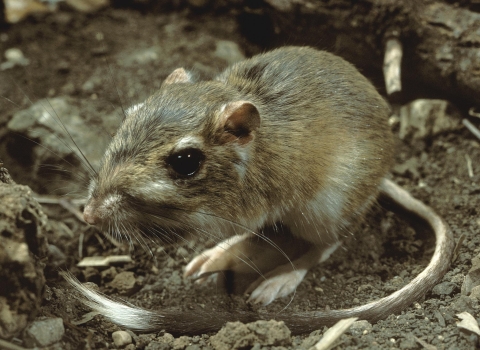The U.S. Fish and Wildlife Service announces the availability of a draft recovery plan for Gonocalyx concolor (no common name), a plant native to the elfin forests of the Carite Commonwealth Forest, a public land managed for conservation by the Puerto Rico Department of Natural and Environmental Resources (PRDNER).
Listed as an endangered species with 198 acres of critical habitat in 2014, the species is threatened by habitat destruction, modification, and fragmentation due to construction and expansion of telecommunication towers and associated facilities, and road improvements. In addition, its limited distribution and highly specialized ecological requirements exacerbate the potential threats posed by other factors (e.g., landslides, vegetation clearance, human induced fires, competition, and environmental effects resulting from climate change climate change
Climate change includes both global warming driven by human-induced emissions of greenhouse gases and the resulting large-scale shifts in weather patterns. Though there have been previous periods of climatic change, since the mid-20th century humans have had an unprecedented impact on Earth's climate system and caused change on a global scale.
Learn more about climate change ).
To promote and support the conservation and survival of endangered species and threatened species, and provide a transparent path to achieving recovery, we and our partners develop and implement recovery plans. Recovery plans are unique to each species and serve as central organizing tools that provide important guidance on methods of minimizing threats to listed species, such as restoring and acquiring habitat, removing introduced predators or invasive species invasive species
An invasive species is any plant or animal that has spread or been introduced into a new area where they are, or could, cause harm to the environment, economy, or human, animal, or plant health. Their unwelcome presence can destroy ecosystems and cost millions of dollars.
Learn more about invasive species , conducting surveys, monitoring individual populations, reproducing the species through controlled propagation programs to augment their current populations, and reintroductions into historic ranges. Recovery plans identify measurable and objective criteria against which progress towards recovery of a species can be tracked over time. Recovery plans are guidance documents and not regulatory. No agency or entity is required by the Endangered Species Act (ESA) to implement actions in a recovery plan.
The draft recovery plan for Gonocalyx concolor is available at the following link for review and comment until September 6, 2022.
https://ecos.fws.gov/ecp/species/4195
For more information on the species, contact Edwin Muñiz at edwin_muniz@fws.gov.
The mission of the U.S. Fish and Wildlife Service is working with others to conserve, protect, and enhance fish, wildlife, plants, and their habitats for the continuing benefit of the American people. For more information on our work and the people who make it happen, visit www.fws.gov/southeast. Connect with us on Facebook at www.facebook.com/usfwssoutheast, follow our tweets at www.twitter.com/usfwssoutheast, watch our YouTube Channel at http://www.youtube.com/usfws, and download photos from our Flickr page at http://www.flickr.com/photos/usfwssoutheast.


